Award-winning painter Greg Mason is no stranger to painting outdoors. Whether he’s capturing tropical light or a fleeting moment of movement, his plein air practice is rooted in observation, spontaneity, and the joy of painting without pressure. In this blog, Greg shares his top tips for taking your painting kit on holiday – from what to pack to how to choose a subject – and reminds us why creativity belongs just as much on the beach as it does in the studio.
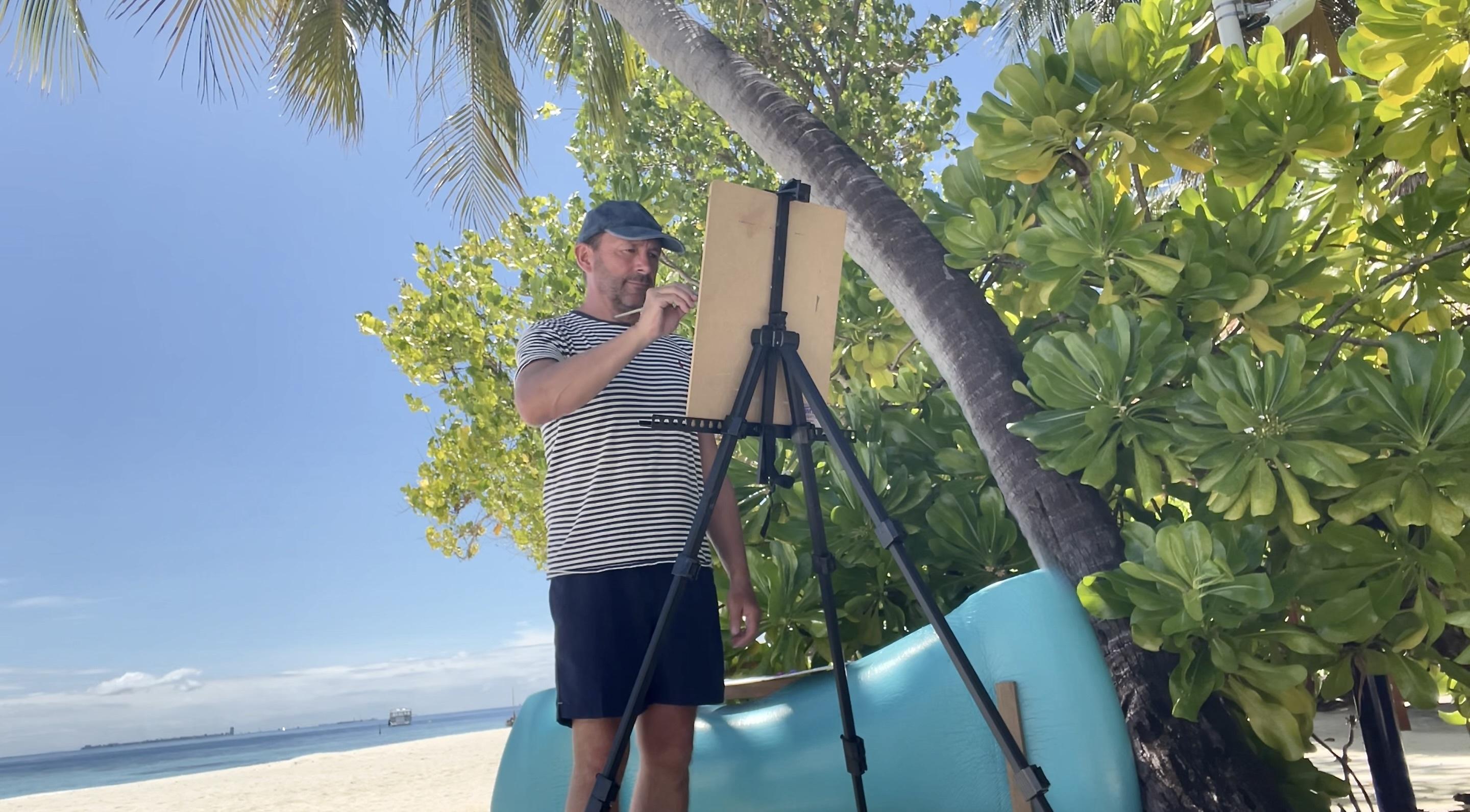
In this blog, I’m going to give you some top tips on how to paint en Plein Air on holiday. Whether you’re on a short trip or long vacation a Plein Air kit is the perfect artists’ travelling companion, offering the opportunity of capturing some of the key places and experiences in a personal and creative way. So read on, as I’ll be running through some of the kit essentials and showing you how I go about the task of making paintings in new and exotic locations.
Most of my vacation paintings are really sketches of moments or places that I find interesting - so for me it’s important to start out with a mindset that says… ‘not every painting has to be a masterpiece’. Remembering I’m actually on holiday takes the pressure off and allows me to have fun with the painting, but even then it’s good to have a process to follow and that’s what I’ll be breaking down for you a bit in this article.
Remembering I’m actually on holiday takes the pressure off and allows me to have fun with the painting, but even then it’s good to have a process to follow and that’s what I’ll be breaking down for you a bit in this article.
Let’s start with some kit essentials. For an easel I choose the Jakar aluminium travel easel because it’s lightweight, portable and super quick to assemble. It flexes to take a variety of surfaces in a wide range of sizes and because I’m going to be painting on Cass Art’s Oil and Acrylic paper and Arches Oil paper I’ve included a wooden panel and some Cass Art adhesive tape. I sometimes take oil paints with me and use Liquin to speed up drying time, but more frequently I’ll choose Liquitex Heavy Bodied Acrylics as they perform in a similar way to oil but dry fast, making it much easier to bring my paintings home.
Finally, let’s look at the brushes. It’s important to remember that the marks you are able to make are totally dependent on the brushes you choose. For instance, you can’t expect to paint in detail with hog or bristle brushes that you might have been already used a thousand times. So… my motto is… ‘invest in your brushes’ and to my mind the best value for your money is in the Cass Art Grey Synthetic set offering a range of sizes and shapes along with outstanding durability. Now complete the kit with a disposable palette, some Cass Art pencils, a water holder and maybe some clips to hold things down if it gets a bit windy… and you’re all set.
One of my favourite subjects when I travel to tropical destinations are palm trees as they are miracles of nature holding the space between jungle and sea, often taking a battering in strong winds as they simply flex to let the breeze through whilst nurturing a harvest of coconuts. I also see them as abstract shapes and this is how I approach painting them, finding an angle that pushes to the edge of my canvas and breaks out.
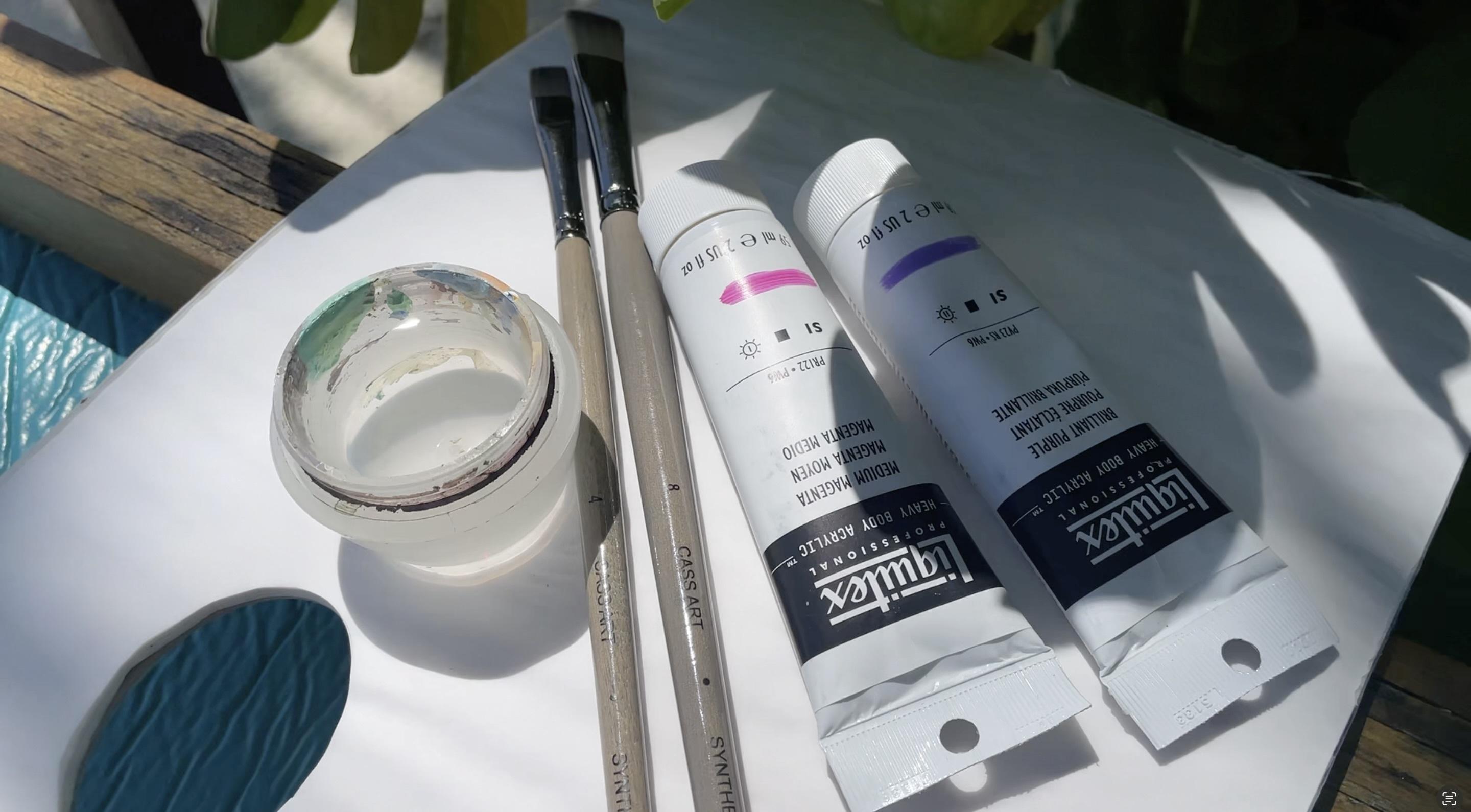
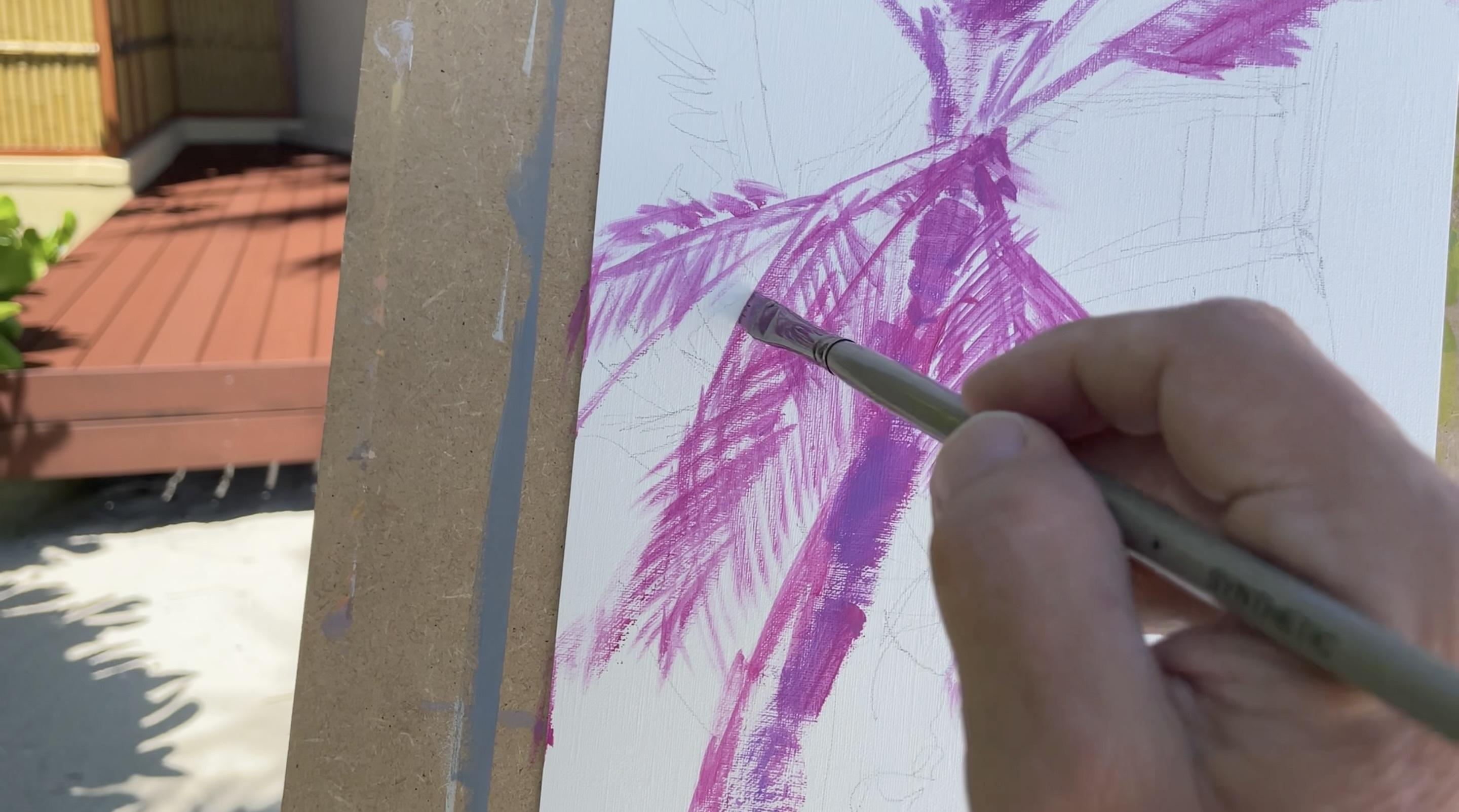
I’ve painted a lot of palms in the past and I know that a simple under-painting in magenta or a combination of magenta and purple will create a great base layer upon which I can develop colour values later. The Short Flat Cass Art Grey synthetics come into their own here giving me the option of blocking in or making fine lines as required by the palm leave fronds. Lots of texture and quick movements are important here are these palms are moving all the time and you need to paint them in a way that makes them come alive.
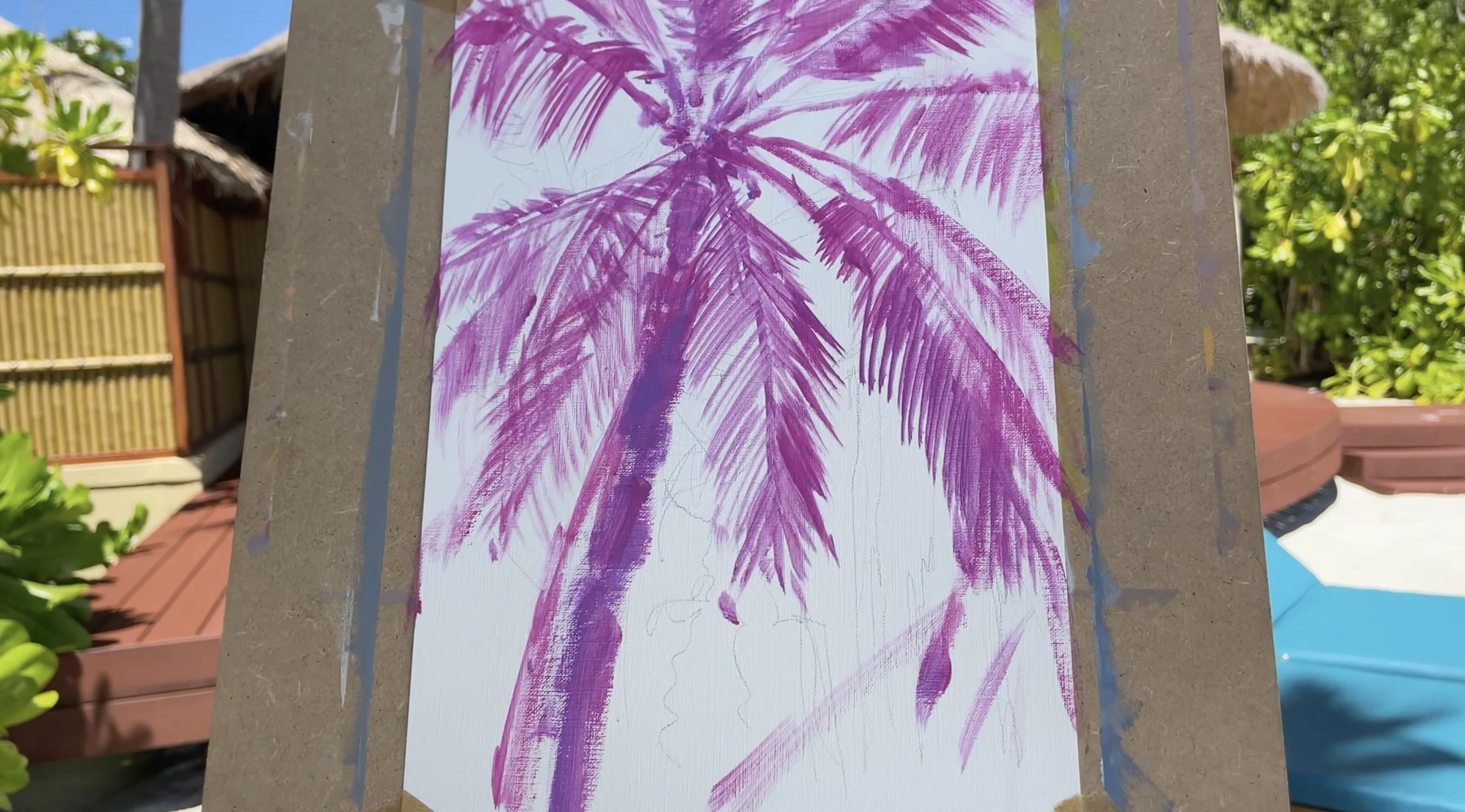
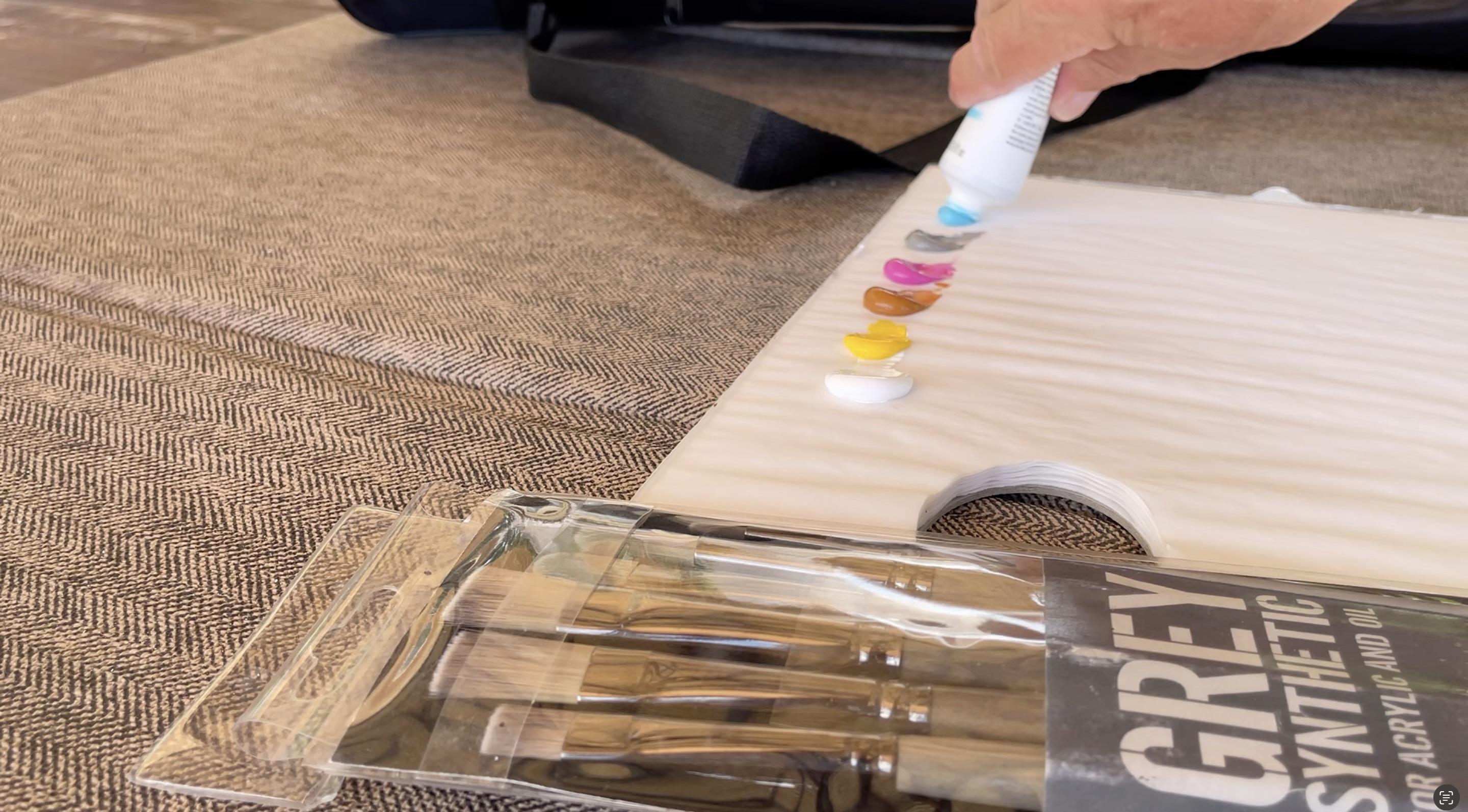
Adding to my palette now with an extension of colours, I make a second pass on the painting, developing the leaves and trunk, adding the sky and working towards a few finishing touches.
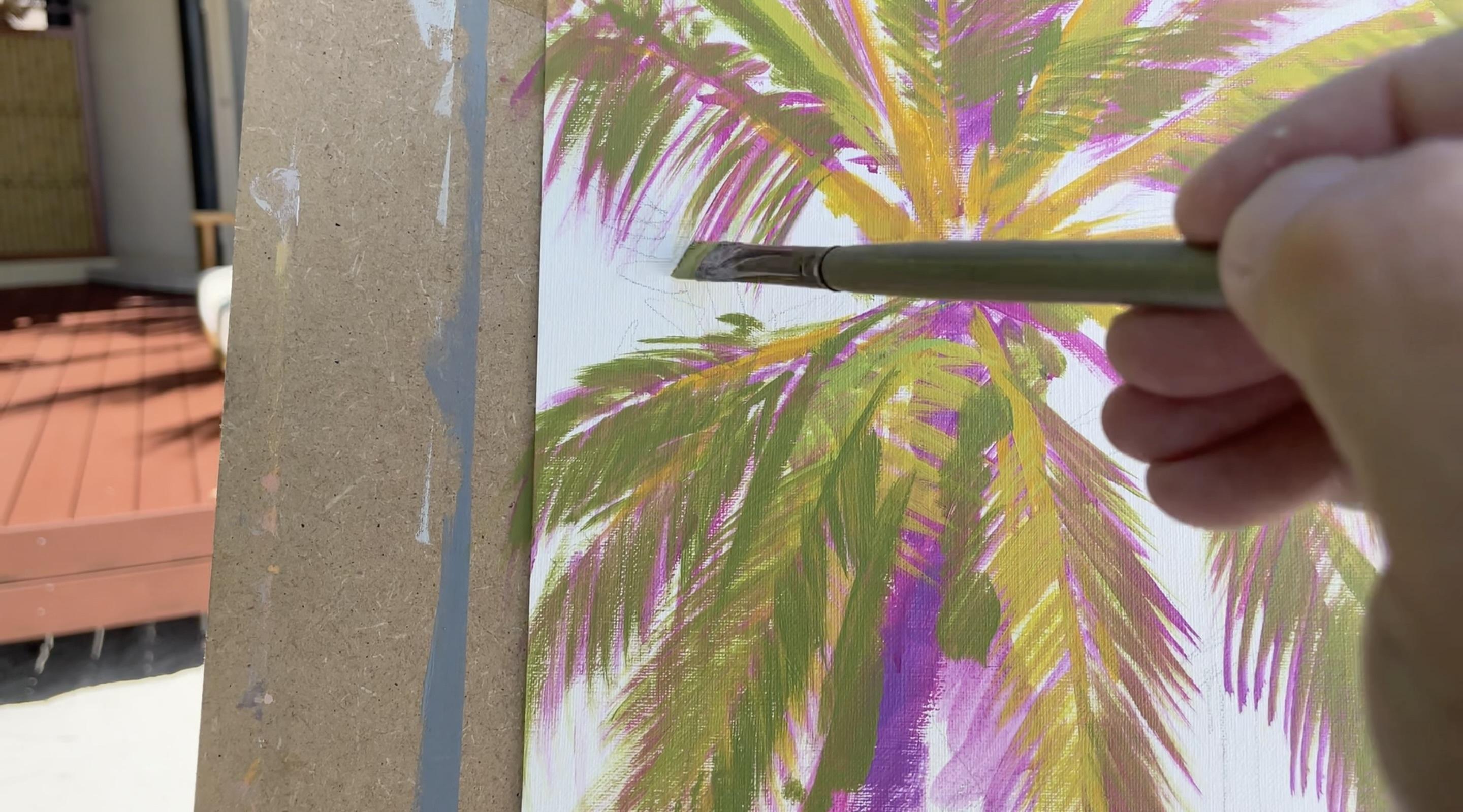
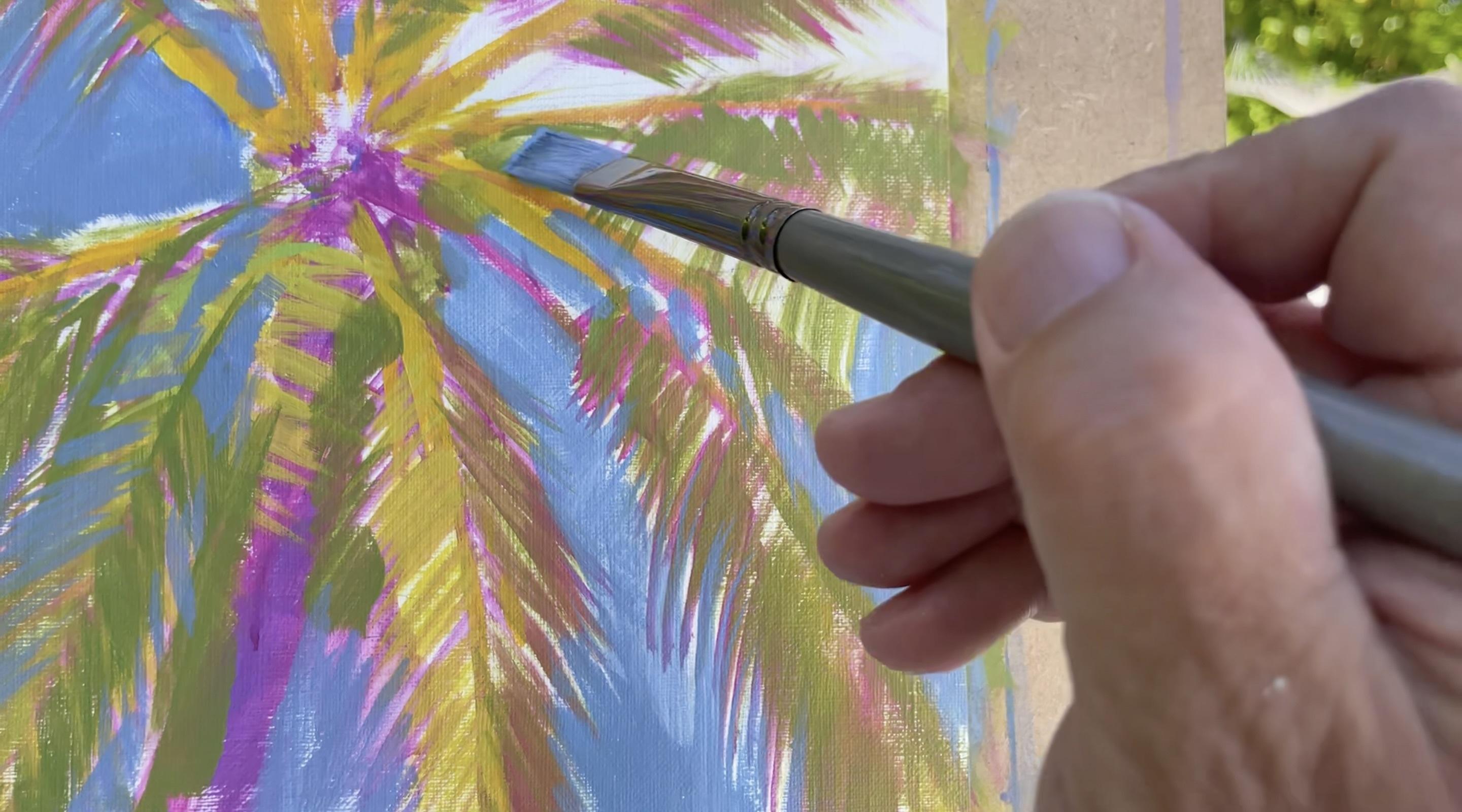
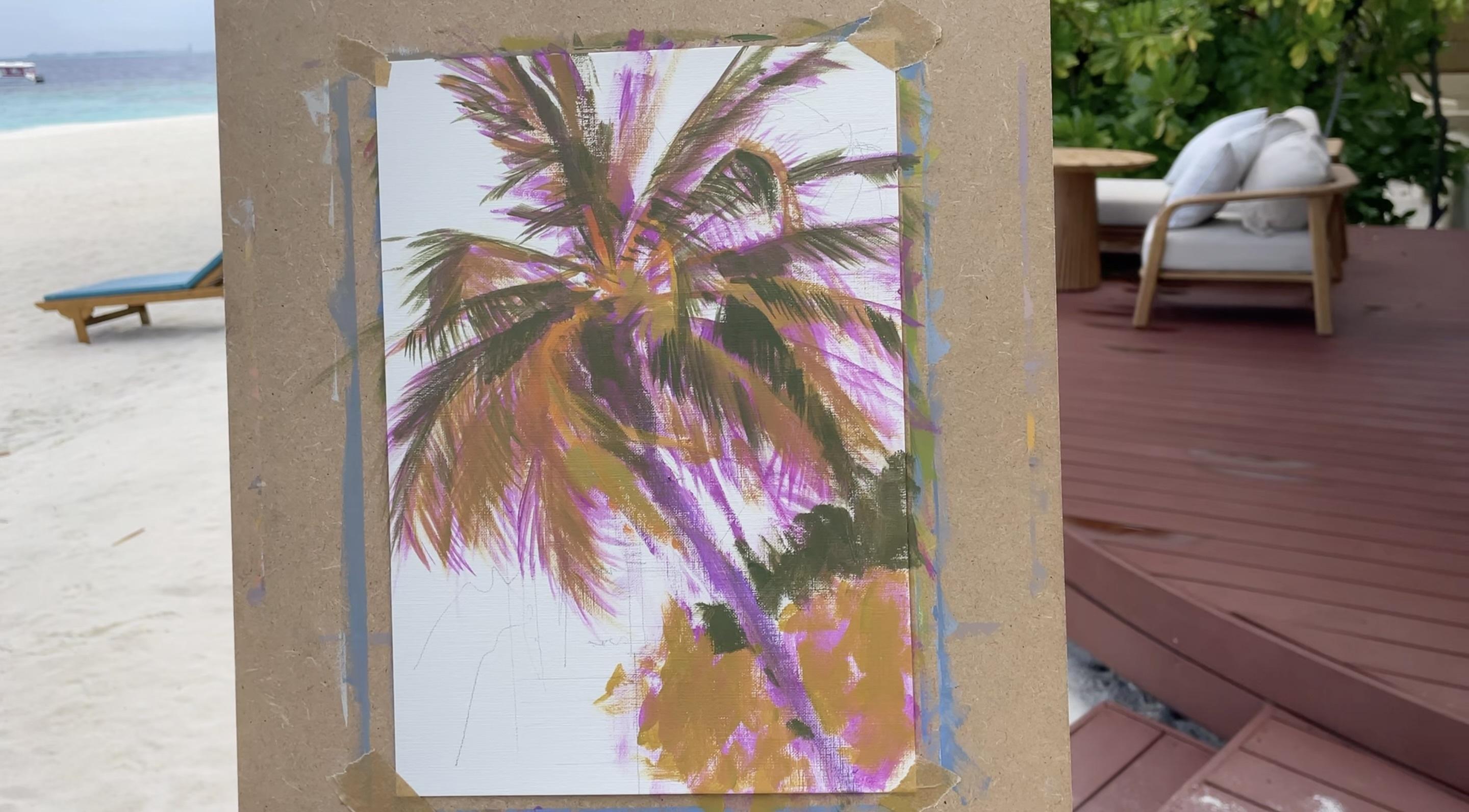
Here’s a second palm seen from a different angle, another two colour start on Cass Art Oil and Acrylic A4 paper.
Finally, here’s a painting on different material, Arches Oil paper, showing a typical tropical holiday sunset scene. This painting is a bit more detailed and was completed over a few sessions.
Top Tip: The thing I noticed about the Arches paper (which I loved because of its thick rich quality) was it’s super absorbency. The acrylics dried really fast, so it’s probably more suited to using with oils where blending is often a key requirement.
On holiday… I’m thinking a painting should take just about as long as drinking a cold beer (or two) or a cup of tea (depending on preference) and then it’s time for a swim or a wander along the beach to find a restaurant. Painting is my equivalent of reading a holiday book or playing travel scrabble which is something I avoid at all costs because my partner is so good at it.
There’s everything you need right here on the Cass Art site to set you up for your next holiday Plein Air session, so go ahead and take the studio with you next time you go and tag #cassart so we can see what you’ve done.
Add a Wishlist
form to add wishlist here